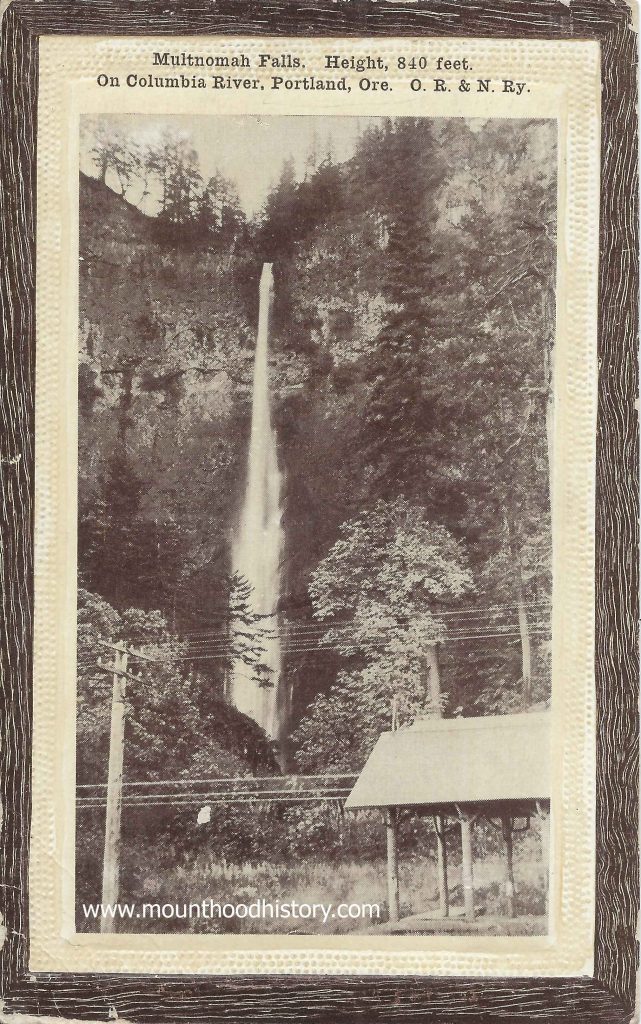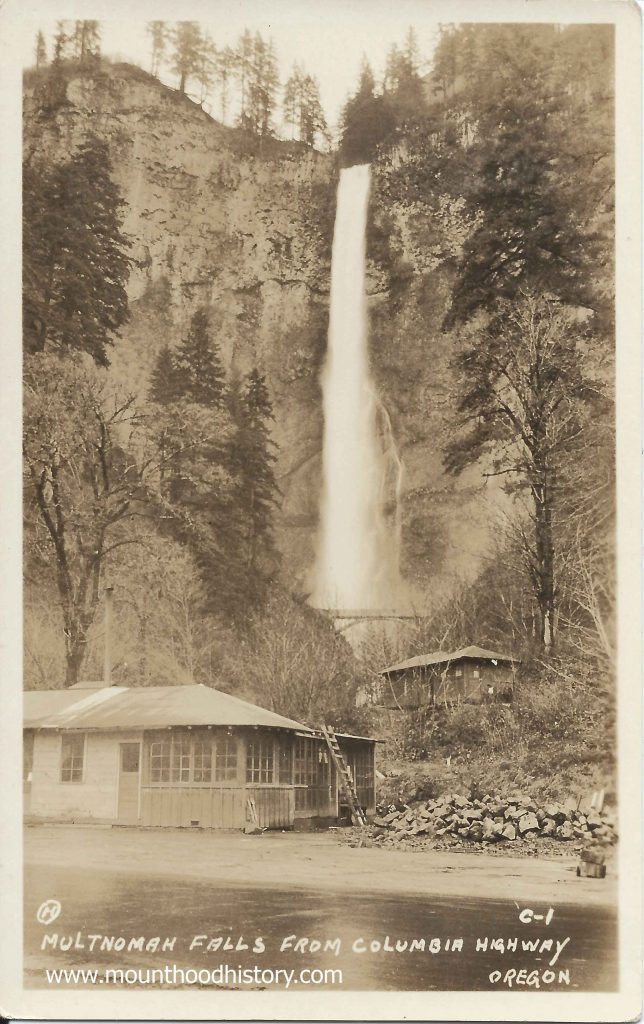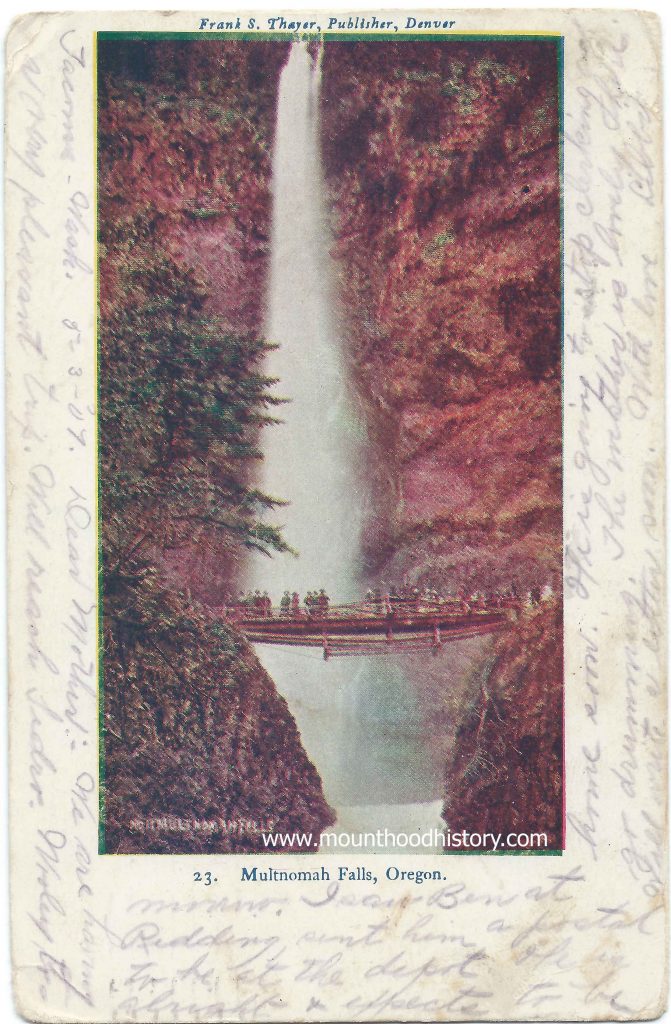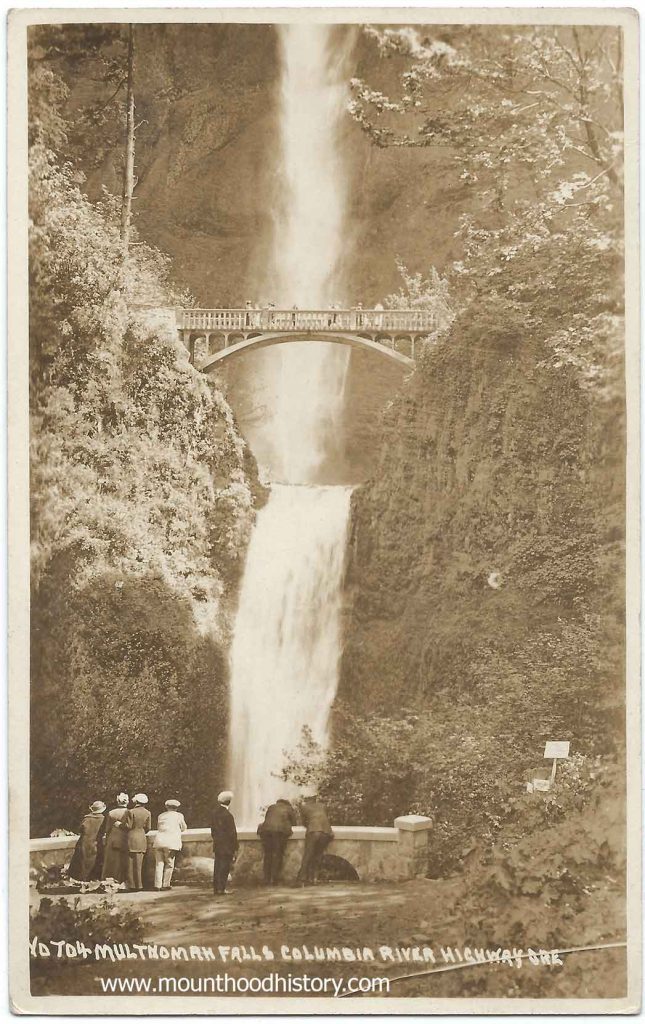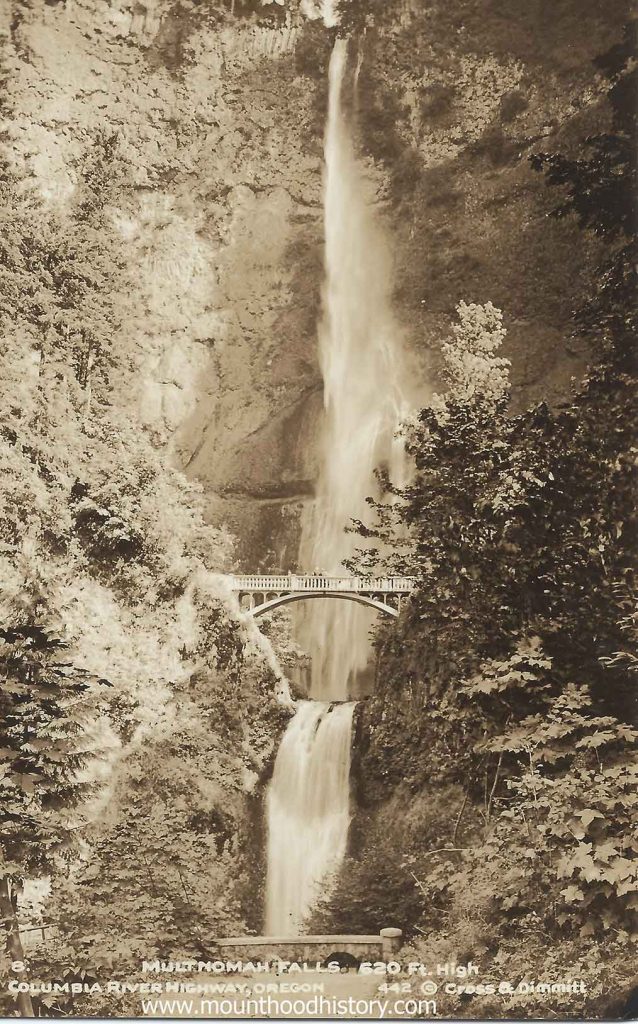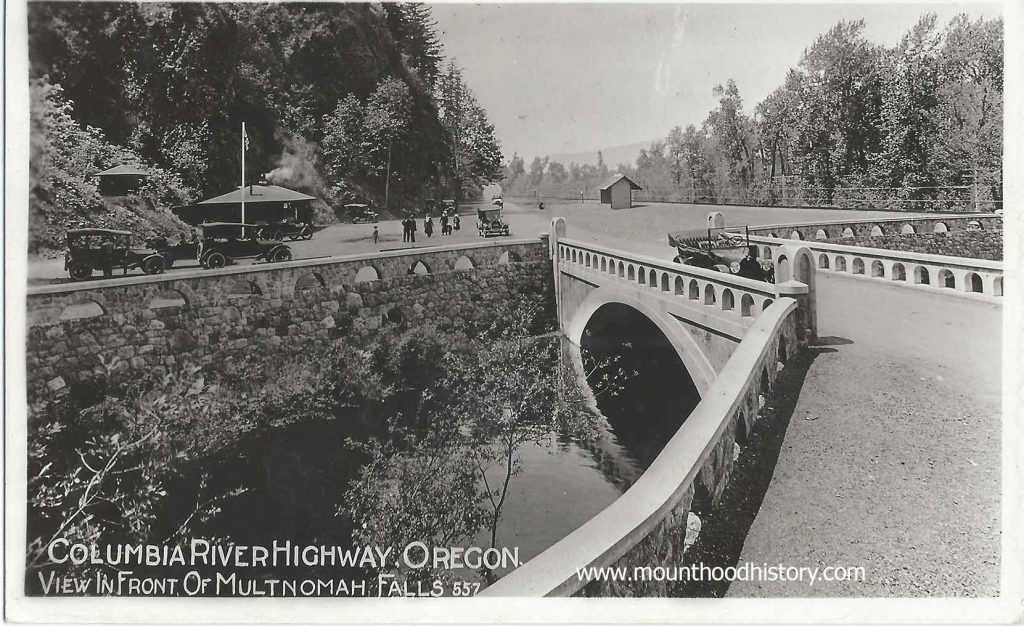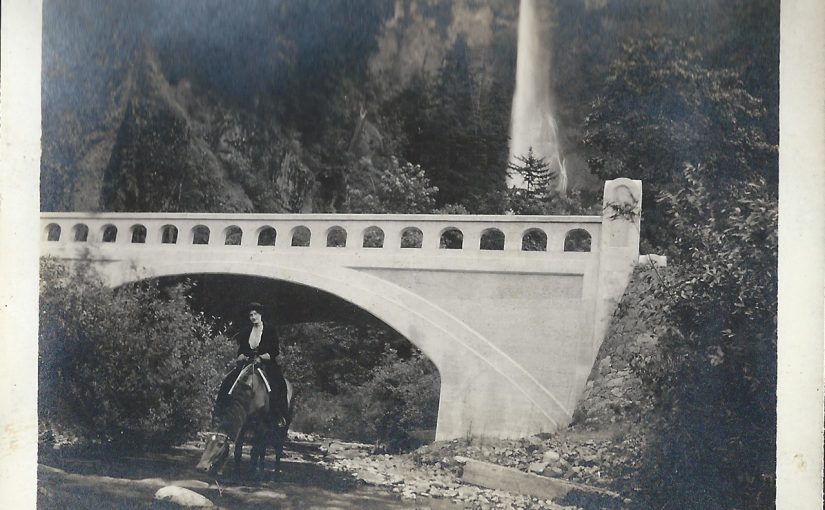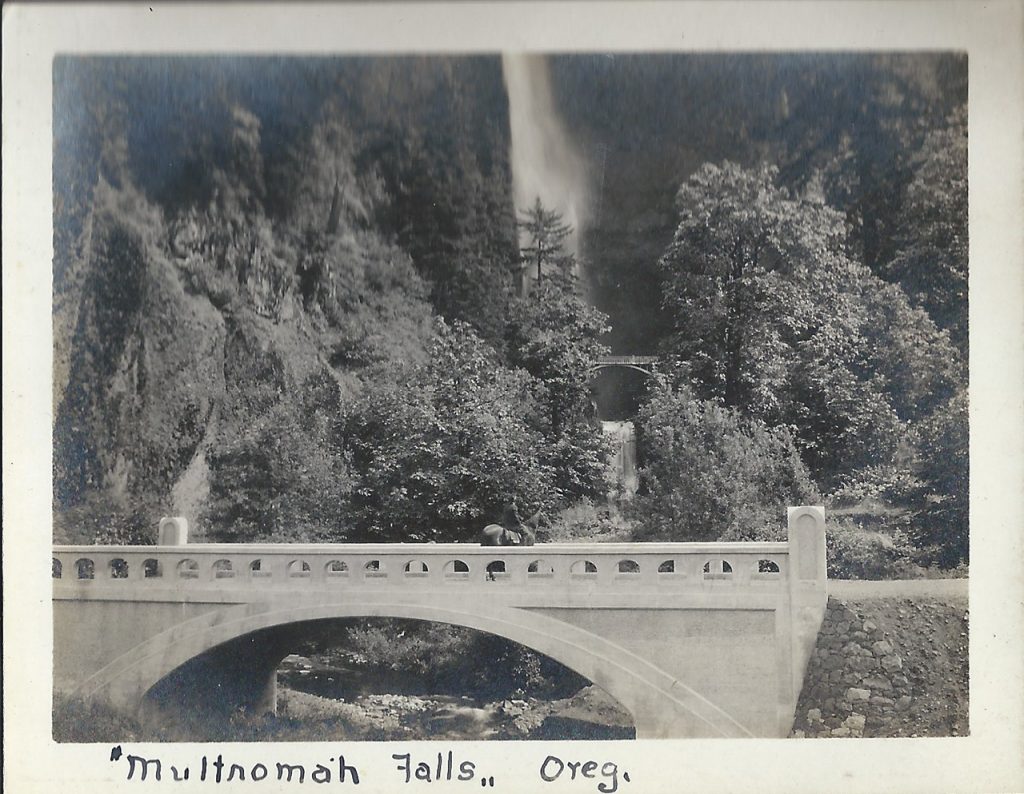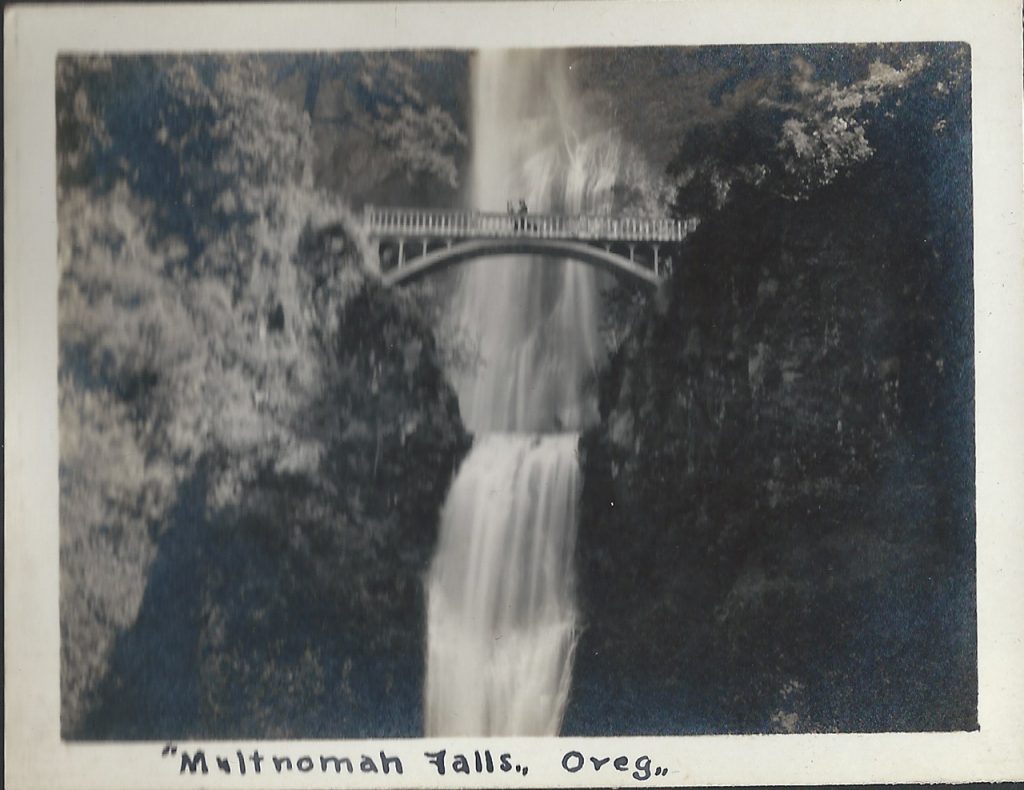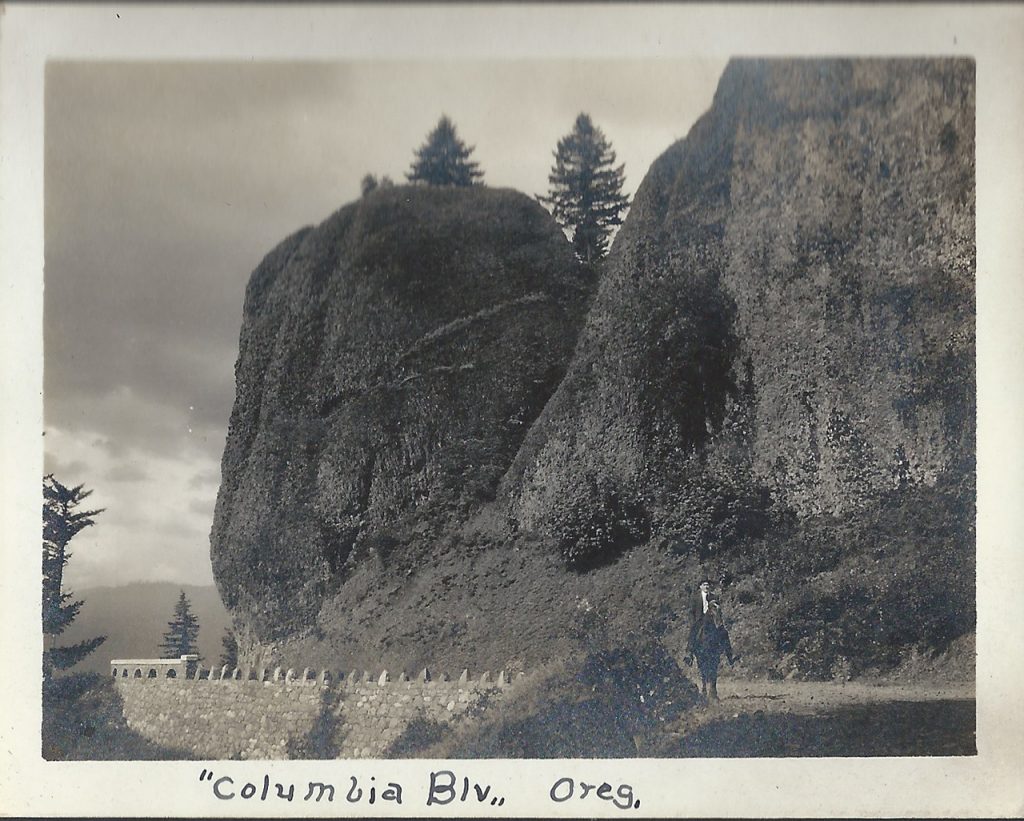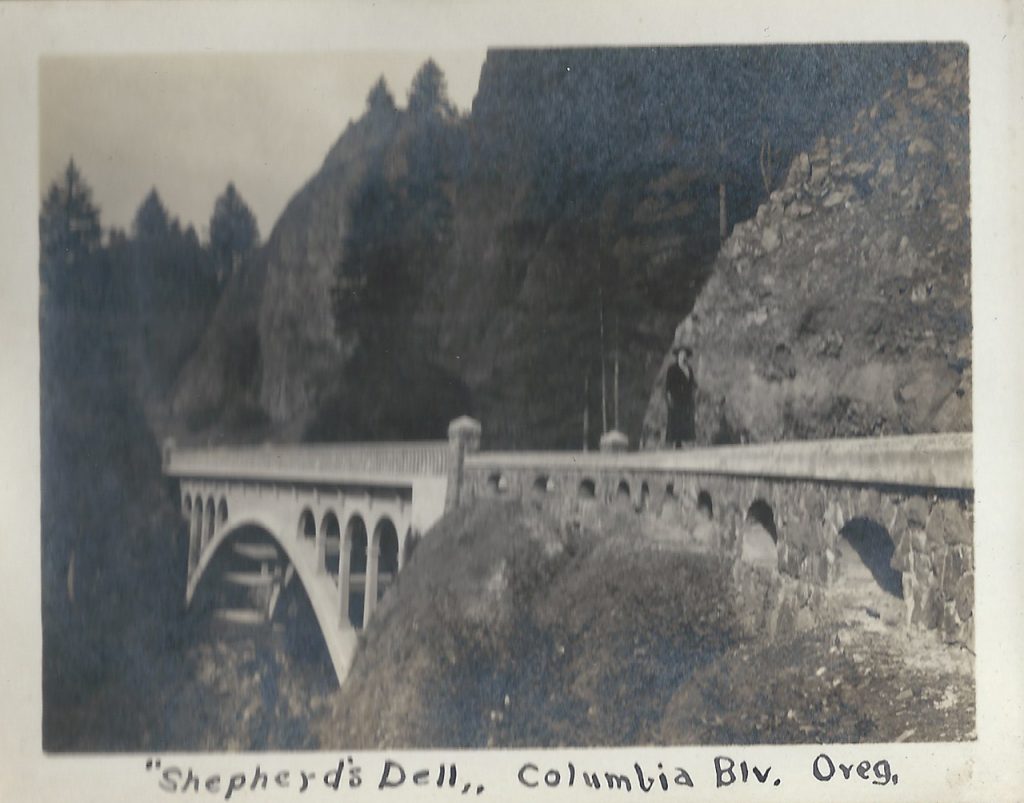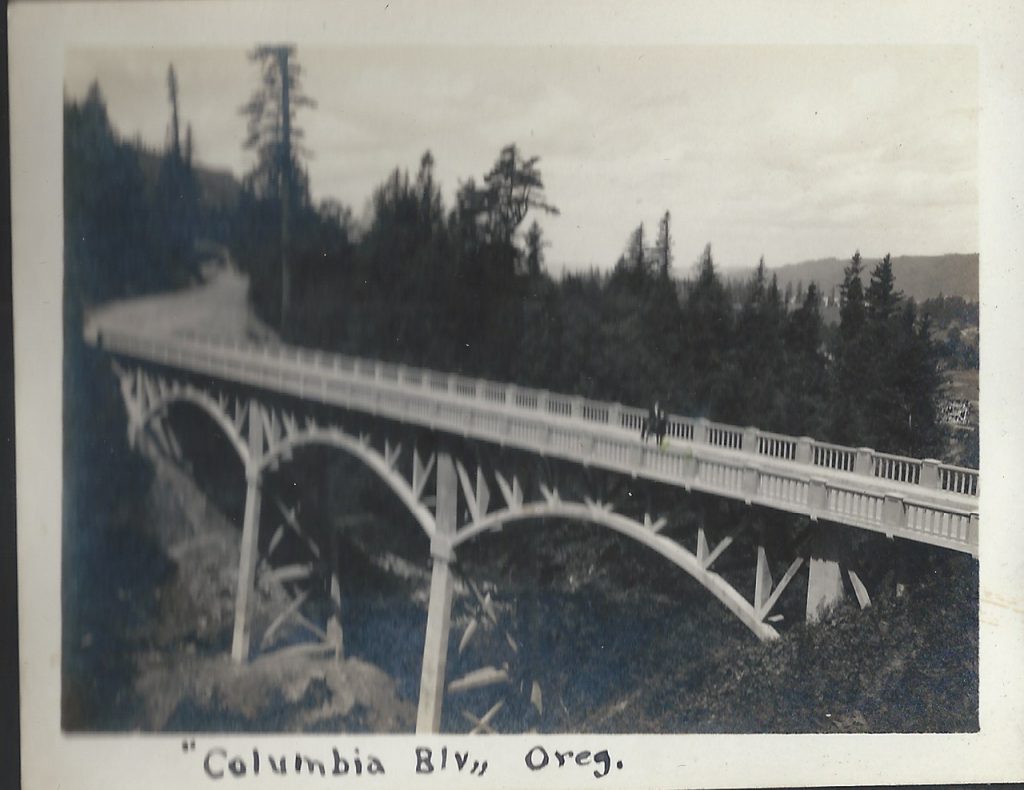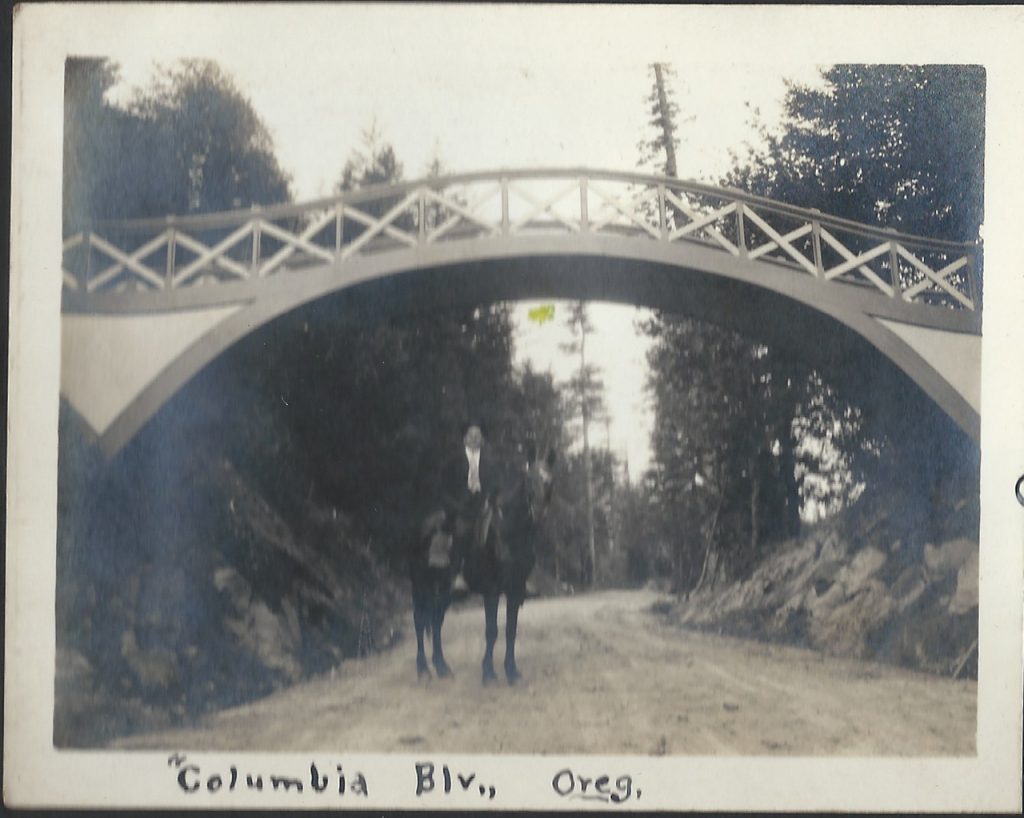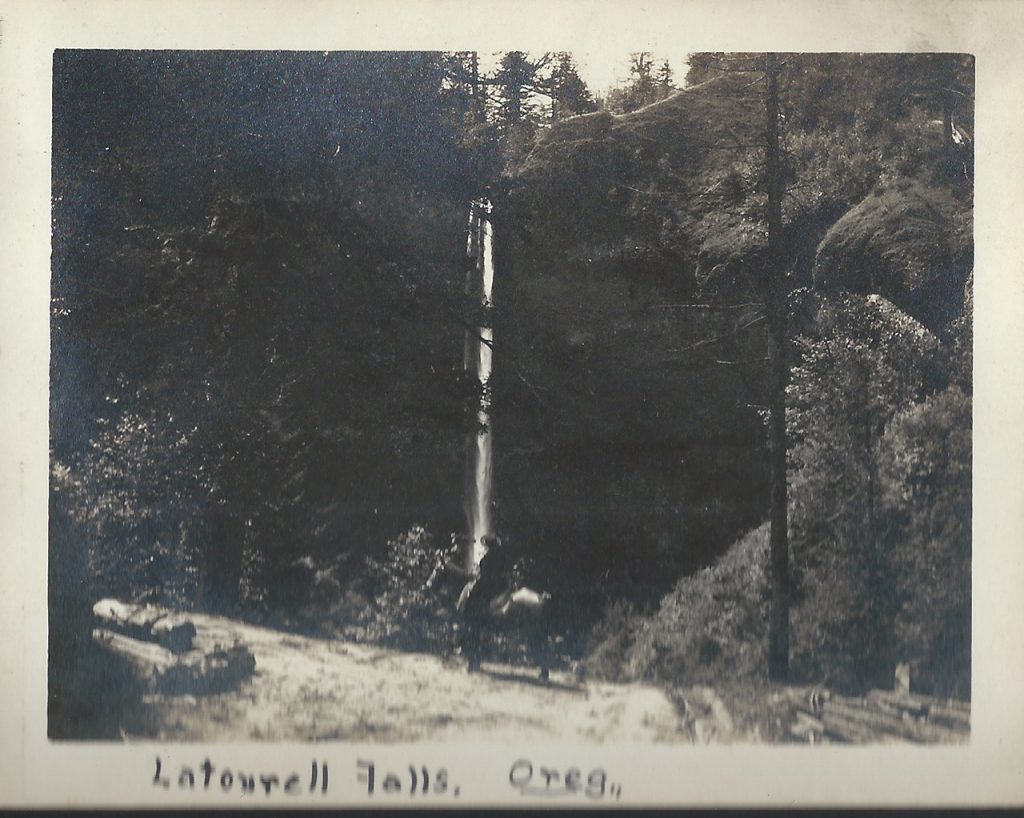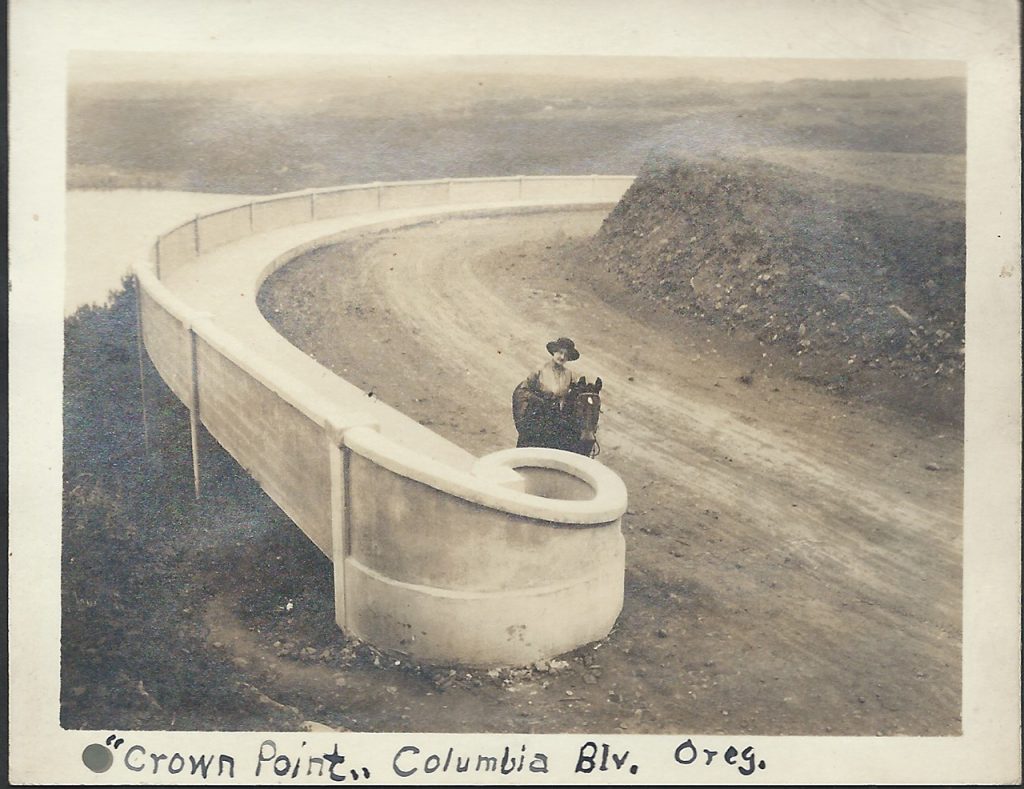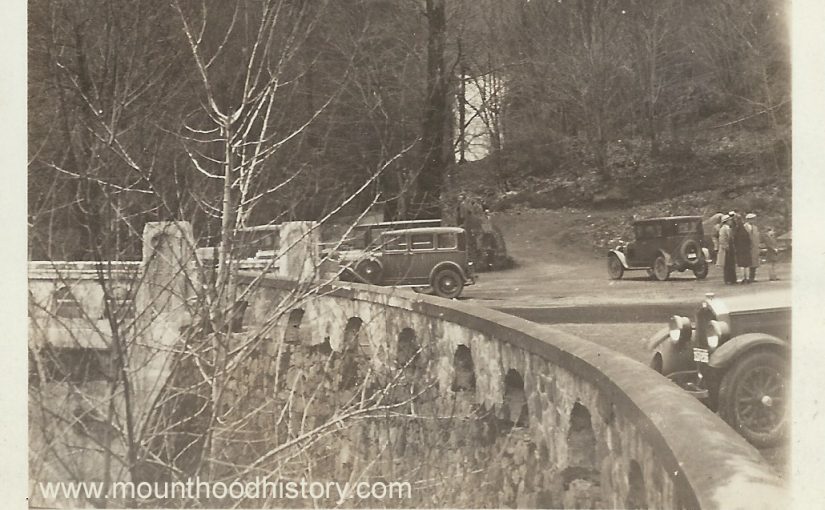Multnomah Falls History – The Bridge Over the Falls – Multnomah Falls is a two tiered waterfall located in the scenic Columbia River Gorge just east of the city of Portland. It was formed about 15,000 years ago as a result of the cataclysmic Missoula Floods, a series of massive floods that scoured out the Columbia River Gorge. It has a total height of 620 feet, with the upper falls being 542 feet and the lower segment being 69 feet. It’s the tallest waterfall in Oregon and the second tallest year-round waterfall in the United States, fourth largest if seasonal falls are included.
Multnomah Falls was named according to a legend of the local native Multnomah people that tells the story of how a beautiful maiden sacrificed herself to save the tribe from a plague by throwing herself from the top of a cliff. The tribe was saved and a creek formed at the top of the cliff creating Multnomah Falls.
From 1884 until World War II the ORNCo Oregon Railroad and Navigation Company operated a train stop at Multnomah Falls. It was around this time that the “bow string truss” bridge across Multnomah Creek, at the same location as the present Benson Bridge, was built. Somewhere around 1891 the bridge was reinforced but by 1899 the bridge was gone, most likely decayed and washed into the creek.
In 1915 a lot was happening in the gorge. Tourism was increasing on the steam powered sternwheelers and train excursions but would soon be replaced by automobile traffic on the soon to be completed, and now historic, Columbia River Highway. With this tourism comes the need for hiking trails. Many of the established trails were being improved and new ones were being made. One in particular was recommended by Samuel Lancaster to the Progressive Business Men’s Club of Portland to build a trail from the base of Multnomah Falls to the top of Larch Mountain to the south and the source of Multnomah Creek.
The club raised money and with donations from Portland businessman Simon Benson and his son Amos worked with the US Forest Service to establish the trail and a fire lookout on Larch Mountain. Simon Benson then hired Italian stonemasons to construct a bridge to allow access to the trail for visitors to the falls. The bridge is named Simon Benson Bridge in his honor.
That same year Benson donated 1,400 acres of land, including the land where Multnomah Falls is located to the city of Portland. Subsequently the ORNCo donated the land at the base of the falls, where their train station was located, to the city in agreement that a lodge would be built there the same year. The stone Multnomah Falls Lodge’s construction was commissioned that year and the lodge was completed in 1925.
The historic Columbia River Highway was completed and dedicated in 1917 allowing Portlanders to easily take a bus or drive an automobile through the gorge while stopping at it’s amazing waterfalls, especially Multnomah Falls. The Benson Bridge is still used today and provides breathtaking views of the falls up close and personal. It has become a part of Multnomah Fall’s history.


